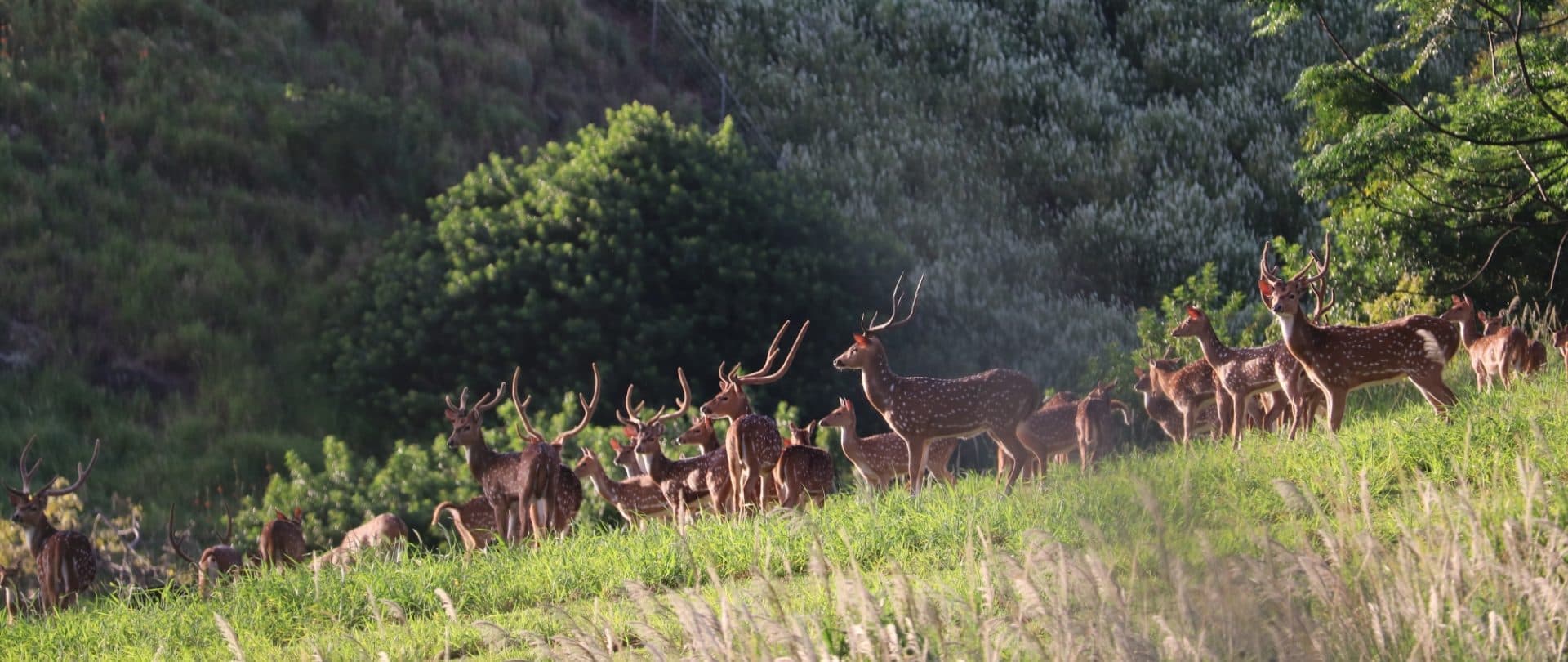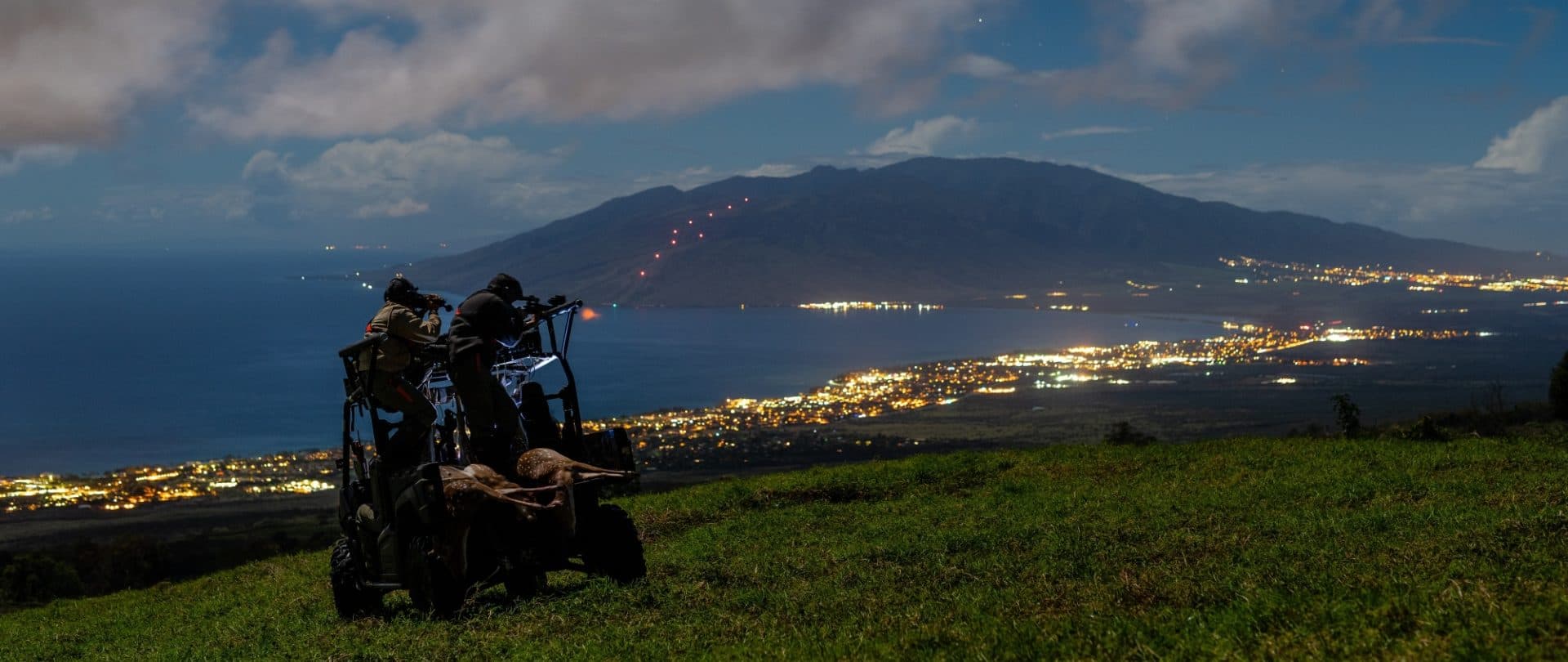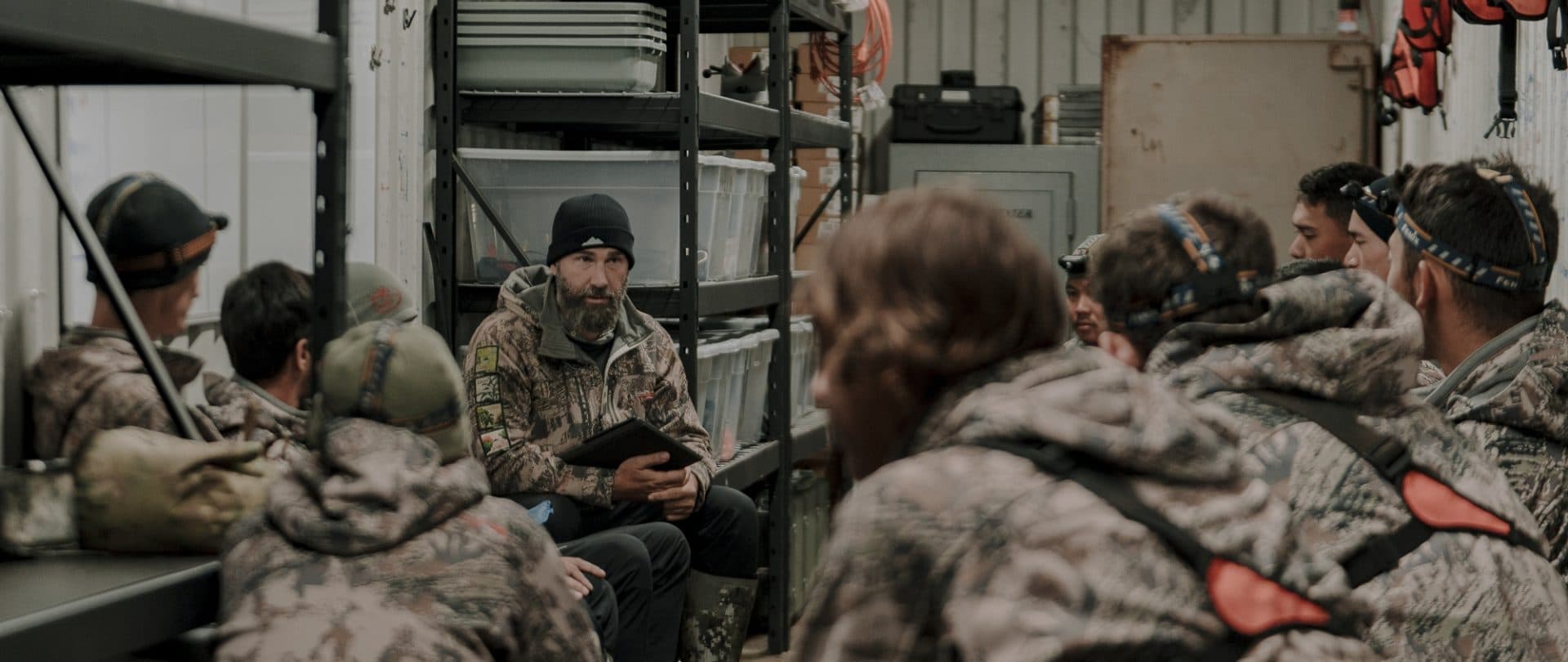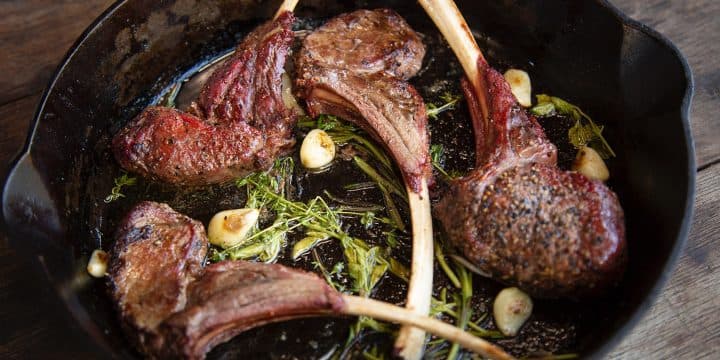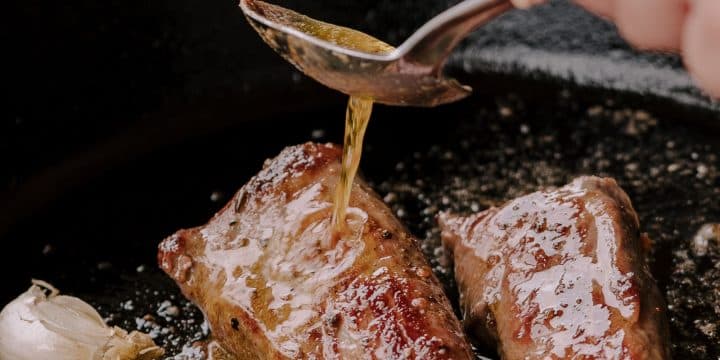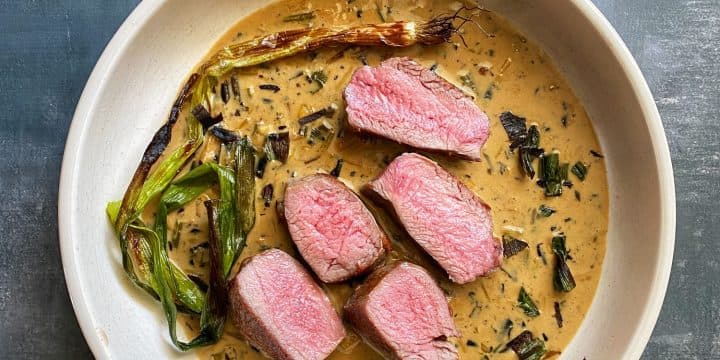Sustainable Harvest
Conservation, culture and cuisine converge at Maui Nui Venison.
BY Krystal Kakimoto
Under a sky dotted with twinkling stars, Jake Muise and his team move quietly through the dark Maui night, driven by a mission to manage the island’s exploding Axis deer population and restore balance to its delicate ecosystem—one carefully harvested step at a time. Through Maui Nui Venison, they have transformed a pressing ecological challenge into an opportunity to ethically harvest Axis deer, protecting native landscapes while providing a sustainable, nutrient-rich food source.
Located in the middle of the Pacific Ocean, Hawai‘i’s delicate ecosystem has evolved over millions of years. Before human contact, plants and animals arrived on the islands via wind, waves or on the wings of birds. As time passed, native plants and animals co-evolved, achieving a beautiful balance. This fragile balance was disrupted by introducing invasive species that wreaked havoc on native flora and fauna, which had never developed defenses against these external threats. One such invasive species is the Axis deer, introduced to the islands in 1867. Native to the Indian subcontinent, several Axis deer were gifted to King Kamehameha V by dignitaries from Hong Kong. The king, in turn, shipped the Axis deer to Moloka‘i to serve as a source of protein for the island. However, with no predators or seasonal swings and year-round breeding, the population of Axis deer ballooned on the island. In 1960, two bucks and three does were sent to Maui’s Pu‘u o Kali forest area to help build a recreational hunting economy on Maui. Yet, as in the case of Moloka‘i, the Axis deer proved to be more of a problem than a solution, due to the booming population that took hold on the island.
Agile in nature, Axis deer can easily leap over barrier fences and move throughout the island landscape while searching for food sources. Herds can traverse large areas in search of grass, young shoots and shrubs to fulfill their herbivorous diet. As they move, the Axis deer create a domino effect of devastation in their wake as they graze down to the ground. Stripped of vegetation, the land no longer has the structure to retain topsoil during heavy rains. As the soil erodes, it is pushed toward the sea, and the runoff ends in the ocean. The increased sedimentation from the eroded land damages coral reefs and endangers the marine biodiversity prized in the islands. From mauka (towards the mountains) to makai (towards the sea), Axis deer are changing the island landscape in unimaginable ways. Without a stop to their population growth, Axis deer are anticipated to eliminate their food source and reach a population peak of 200,000 in the coming years.
It is this critical ecological crisis that Jake Muise and his wife, Ku‘ulani, are dedicated to addressing. “I grew up in northern Alberta in a family of subsistence hunters and was recruited to play volleyball at the University of Hawai‘i,” says Muise. “While there, I was ‘adopted’ by a Moloka‘i family where I learned about the Axis deer and their value to our local communities. Years later, I developed a more comprehensive understanding of how Axis deer impact our local food and ecosystems and started down the path of understanding how to balance populations while utilizing them as a food resource.”
In 2014, the husband-and-wife duo founded Maui Nui Venison, which combines innovative technology and systems to ethically harvest the Axis deer to regain balance in its population. “We’ve created a third category that’s neither hunting nor ranching. Using FLIR (forward looking infrared) thermal imaging, we harvest deer at night when they’re naturally calm,” says Muise. FLIR technology never spooks the Axis deer; instead, Muise and his crew can efficiently locate the animals without letting their presence be known. “Our deer are 100% wild and free-roaming … never confined or fed artificial diets,” adds Muise.
Along with their unique technologies and systems, a USDA inspector is present throughout the entire harvest process to ensure compliance with USDA standards, mainly since Axis deer is considered exotic meat. Once the Axis deer is harvested, Muise and his team carry each animal on their backs to their USDA and FDA-approved mobile processing facility to avoid ground contamination. Muise also collaborates with a USDA veterinarian to thoroughly inspect every animal before certifying it safe for human consumption.
The resulting venison is rich in protein, complex nutrients, vitamins and minerals. This is partially due to the intelligent grazing habits of the Axis deer, who forage to meet their nutritional needs, which translates to a nutrient-dense food source. “One of the biggest misconceptions is that venison is ‘gamey’,” says Muise. “Our stress-free harvesting eliminates the stress hormones causing those flavors. People think venison is tough when wild deer develop finer, more tender muscle fibers than feedlot animals. Many don’t realize it’s nutritionally superior, with more protein per calorie and higher levels of bioavailable iron and zinc. Our process creates meat that’s fundamentally different in both flavor and nutritional value.”
Chefs nationwide are embracing Maui Nui Venison for its exceptional quality, sustainability and deep connection to conservation. From appearing on menus at The French Laundry in California to Na‘au Hilo on Hawai‘i Island, whose locally sourced, heritage-rooted dishes aim to educate guests about Hawai‘i’s unique culinary landscape, more people in the culinary field are making Maui Nui Venison a choice in their contemporary kitchens. At the Fairmont Kea Lani’s Kō Restaurant in Wailea, Executive Chef Jonathan Pasion features the wild-harvested Axis deer complemented by a Kula black raspberry pineapple compote and red wine-demi glace, which enhances the meat’s rich flavor. Accompaniments include braised potatoes, Otani Farm carrots, green beans and cherry tomatoes, which offer a harmonious blend of textures and flavors that highlight Maui’s local produce.
In addition to partnerships with select retailers and collaborations with chefs, Maui Nui Venison is also available on their website, where you can find various wild-harvested deer products, including rib chops, sirloin, sausages and bone broth. In addition to their food products, they also offer supplements to align with their philosophy of whole animal utilization. For Muise, another aspect of their retail is selecting where their products are featured, “You’ll find us in quality-focused grocery stores, like Mana Foods [in Pā‘ia]. We’re also committed to our Holo ‘Ai food-sharing program, which has donated over 190,000 pounds [of food] to our local community,” he says.
Looking forward, Muise and Maui Nui Venison emphasize balance over business. “As we continue our work, we’ll see venison supply naturally decrease as populations reach a healthier balance on Maui. This journey has never been about growing a big company—it’s about the mindful consumption of a great product that can help restore ecosystems while supporting our local communities,” says Muise.
Maui Nui Venison; mauinuivenison.com
